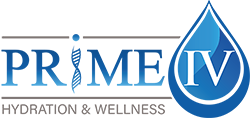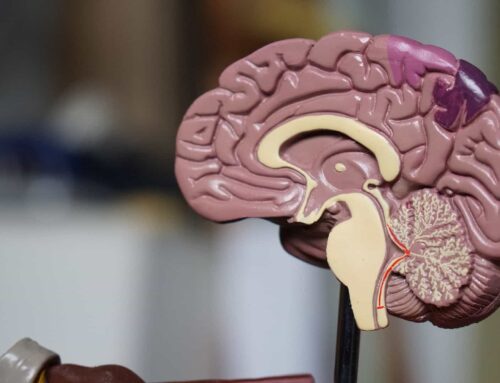Gaining lean muscle without unwanted fat can be a challenging endeavor. To achieve maximal lean muscle growth and minimal fat gain, a combination of proper nutrition and training is essential. In this article, we will delve into 10 valuable tips to help you on your journey to obtaining lean muscle.
Defining Lean Muscle Mass
Before we dive into the tips, it’s important to understand what lean muscle mass means. Lean muscle refers to the process of gaining muscle without accumulating excessive body fat. Muscle itself is a lean tissue, but many individuals struggle to strike the right balance between muscle gain and fat gain. Optimal diet strategies during a lean muscle growth phase and well-suited workout programs play crucial roles in achieving this balance. Now, let’s explore the 10 tips to help you get lean muscle.
1. Consider IV Therapy
If you’re looking to enhance your lean muscle growth, considering IV therapy as part of your regimen can be a wise choice. IV therapy offers a direct and efficient way to supply your cells with vital nutrients and fluids, promoting tissue repair and reducing inflammation. This can significantly aid in your overall recovery and support muscle development. Proper hydration and optimal nutrient absorption are key factors in achieving effective muscle growth. Nevertheless, it’s essential to consult with a healthcare professional to ensure that IV therapy aligns with your individual needs and goals, as they can provide personalized guidance for the best results.
Related Link: What To Know About IV Fluids for Dehydration
2. Track Your Macros to Optimize Body Composition
Achieving lean muscle gains requires a meticulous approach to tracking your macros, making it a fundamental aspect of your nutritional strategy. Understanding individual macronutrients – protein, carbohydrates, and fats – is crucial for achieving optimal body composition. By closely monitoring and optimizing your macros, you ensure your body receives the precise balance of nutrients needed for muscle growth and repair. Protein, a critical building block for muscles, supports their development and recovery, while carbohydrates provide the energy necessary for intense workouts and efficient recovery. Fats play a significant role in hormone production and overall health. By comprehensively understanding your macros, you can fine-tune your diet to promote lean muscle development while minimizing undesirable fat gain. Keeping a detailed record of your daily caloric intake and macronutrient distribution provides valuable insights into your nutritional habits, enabling informed adjustments to effectively achieve your muscle-building goals.
3. Don’t Skimp On Your Rest Periods for Heavy Exercises
Giving sufficient attention to rest periods between sets during heavy exercises is of paramount importance when it comes to optimizing muscle building and overall workout performance. Resting adequately between sets, particularly during intense heavy training sessions and when training to failure, allows your muscles to recover and replenish their energy stores, ensuring you can maintain the intensity and effort throughout your workout. Research has shown that longer rest periods are equally as effective as shorter ones for stimulating muscle growth when lifting heavier loads. By allowing yourself ample time to recover between sets, you enable your body to clear metabolic waste, replenish ATP (adenosine triphosphate) stores, and restore phosphocreatine levels, which are vital energy sources for intense muscle contractions. Longer rest intervals also promote better neuromuscular recovery, allowing your nervous system to recuperate and prepare for the next set, which ultimately contributes to enhanced muscle activation and performance. This recuperation process empowers you to train with greater intensity, lift heavier weights, and perform more volume (sets, reps, and load) during your workouts, all of which are crucial factors in driving muscle growth. While adequate rest periods are crucial for heavy exercises, it’s essential to strike a balance that suits your individual training goals and preferences. Striving to find the ideal rest period that allows you to train with sufficient intensity and recover effectively is key to optimizing muscle growth and overall training efficiency. Experiment with different rest durations and adjust them based on your body’s response and your performance in each training session. By incorporating appropriate rest periods into your heavy exercise routine, you can maximize your muscle-building potential and achieve your desired fitness goals more effectively.
4. Train a Muscle to Failure or Very Near Failure
Training a muscle to failure or very near failure is a fundamental principle that holds the key to unlocking substantial muscle growth and progress. When you push your muscles to their limits during workouts, by performing repetitions until you can no longer complete them with proper form, you create a powerful stimulus for muscle hypertrophy. By challenging your muscles to the point of exhaustion, you effectively disrupt their homeostasis, prompting them to adapt and grow stronger to handle future demands. This process of microtrauma and repair is the foundation of muscle growth, as it initiates the synthesis of new proteins and the thickening of muscle fibers, resulting in increased muscle size and strength over time.
However, it is important to approach muscle failure with caution, especially during high-load training, as it can increase the risk of injury if not executed with proper technique. For optimal results, aim to reach muscle failure within a controlled setting, with a spotter or safety measures in place to ensure your safety. Embracing this challenging but rewarding aspect of training will propel your muscle-building journey to new heights, allowing you to achieve your desired gains and push beyond your previous limitations. Remember, consistency and progressive overload, coupled with appropriate recovery, are the keys to harnessing the full potential of training to failure and realizing the impressive muscular development it can bring to your physique.

5. Use Machines and Isolation Exercises to Build More Muscle
Integrating a variety of exercises, including compound movements, machine exercises, and isolation exercises, into your workout routine offers a comprehensive strategy to optimize muscle growth. Compound exercises form the backbone of any effective muscle-building program as they engage multiple muscle groups simultaneously and promote substantial strength gains. However, machines and isolation exercises are equally important in refining muscle development and addressing specific muscle imbalances, ensuring a well-rounded and balanced approach to building muscle effectively. By utilizing machines, you can isolate and target individual muscles with more precision, which is especially beneficial for enhancing muscle symmetry and addressing weaknesses. These exercises provide controlled and stable movements, minimizing the risk of injury and allowing you to focus solely on the target muscle group. Isolation exercises, on the other hand, emphasize muscle contraction and activation, isolating specific muscles to achieve optimal hypertrophy.
By incorporating these targeted movements into your routine, you can effectively enhance muscle definition and shape, sculpting a well-balanced and aesthetically pleasing physique. Moreover, using machines and isolation exercises as supplementary tools helps distribute training stress across different muscle groups, promoting efficient recovery and minimizing overuse injuries. However, it’s crucial to strike a balance between compound and isolated movements to avoid overemphasis on specific muscles and maintain overall functional strength. By combining compound lifts, machine exercises, and isolation movements strategically, you create a comprehensive training program that stimulates muscle growth from multiple angles, giving you the best opportunity to achieve a well-developed and proportionate physique that turns heads both inside and outside the gym.
Related Link: Knowing About IV Therapy Regulations
6. Supplement with Protein Powders and Creatine to Enhance Lean Muscle Growth
Supplements like protein powders and creatine have shown significant benefits in promoting lean muscle growth, strength, and recovery. Protein powder helps ensure adequate protein intake, especially when whole foods may fall short. Creatine supplementation has been linked to increased power output, sprint performance, and improved resistance training capacity.
7. Track Your Weight Gain During a Lean Muscle Diet
Tracking your weight gain progress during a lean muscle diet is crucial for understanding your body’s response to the training and nutrition plan. Aim for a gradual weekly weight gain of 0.5-1 pound, as this helps ensure that most of the gained weight is attributed to lean muscle growth, not excessive fat gain. Remember that muscle growth has its limits, unlike fat gain, so staying within this recommended range will promote lean muscle development and help you achieve your goals effectively. Consistent tracking and adjustments based on your progress will allow you to fine-tune your approach for optimal results.
Want the health benefits of IV Therapy? Book your appointment today.
8. Integrate “Mini-Cutting Diet Phases” As Needed to Lose Fat
For intermediate and advanced lifters experiencing rapid muscle and fat gain, incorporating short-term mini-cut phases can help halt fat accumulation and allow you to extend your muscle-building phase. This advanced diet strategy involves a focused fat loss phase to reset and resume lean muscle gain.
9. Train the Muscle in the Fullest Range of Motion
Incorporating full range of motion exercises into your training regimen is a key principle for optimizing muscle growth and enhancing athletic performance. By prioritizing exercises that utilize the full range of motion, you can effectively engage and activate muscle fibers throughout the entire spectrum of movement. This approach plays a crucial role in achieving your fitness goals and maximizing the benefits of your workouts. By executing exercises through their complete range, you subject your muscles to a more extensive stretch and contraction, stimulating greater muscle fiber recruitment and tension. This comprehensive muscle activation plays a pivotal role in inducing muscle hypertrophy as it ensures that all muscle fibers, including those typically underutilized in partial range movements, receive adequate stimulation and contribute to growth. Moreover, training with a full range of motion enhances joint flexibility, mobility, and stability, promoting better functional movement patterns and reducing the risk of injuries during daily activities and sports.
Full range of motion exercises also promote better muscle balance and symmetry, addressing potential muscle imbalances that can arise from limited movement patterns. Additionally, executing exercises through their full range fosters greater proprioception and kinesthetic awareness, enhancing your mind-muscle connection and enabling more precise control over movement execution. It’s important to note that while full range of motion training is highly advantageous, it may require gradual progression and appropriate modifications for individuals with mobility limitations or previous injuries. Employing proper form and technique during full range exercises is essential to avoid overloading vulnerable joints and connective tissues. By incorporating a full range of motion exercises into your training regimen and focusing on controlled, deliberate movements, you can optimize muscle growth, develop a well-rounded physique, and enjoy improved functional capacity both inside and outside the gym.
10. Perform Heavy Compound Exercises to Build Lean Muscle and Strength
Heavy compound exercises, such as squats, deadlifts, pullups, bench press, and overhead press, are foundational for building lean muscle and strength. These movements allow you to handle heavier loads, increasing muscle growth and hormonal responses.
Looking for an IV Therapy business near you? Find a location near you today.

Building Lean Muscle
Achieving lean muscle growth requires a balanced approach involving nutrition, training, and rest. By tracking macros, eating enough calories and protein, incorporating carbohydrates, and utilizing supplementation strategically, you can optimize your body composition. Performing a mix of heavy compound exercises and targeted isolation movements with proper range of motion and time under tension will effectively stimulate muscle growth. Additionally, paying attention to your rest periods and including some light cardio can further support your lean muscle-building journey.
It’s important to note that everyone’s body responds uniquely, so discovering the most suitable approach for you might require some experimentation. Embrace patience, maintain consistency, and relish the journey as you strive towards your lean muscle objectives. Keep in mind that building lean muscle is a gradual process that demands dedication and commitment, but with the right strategies, you can attain the strong and defined physique you aspire to achieve.
Related Link: IV Therapy For Migraine : Why It’s So Popular





